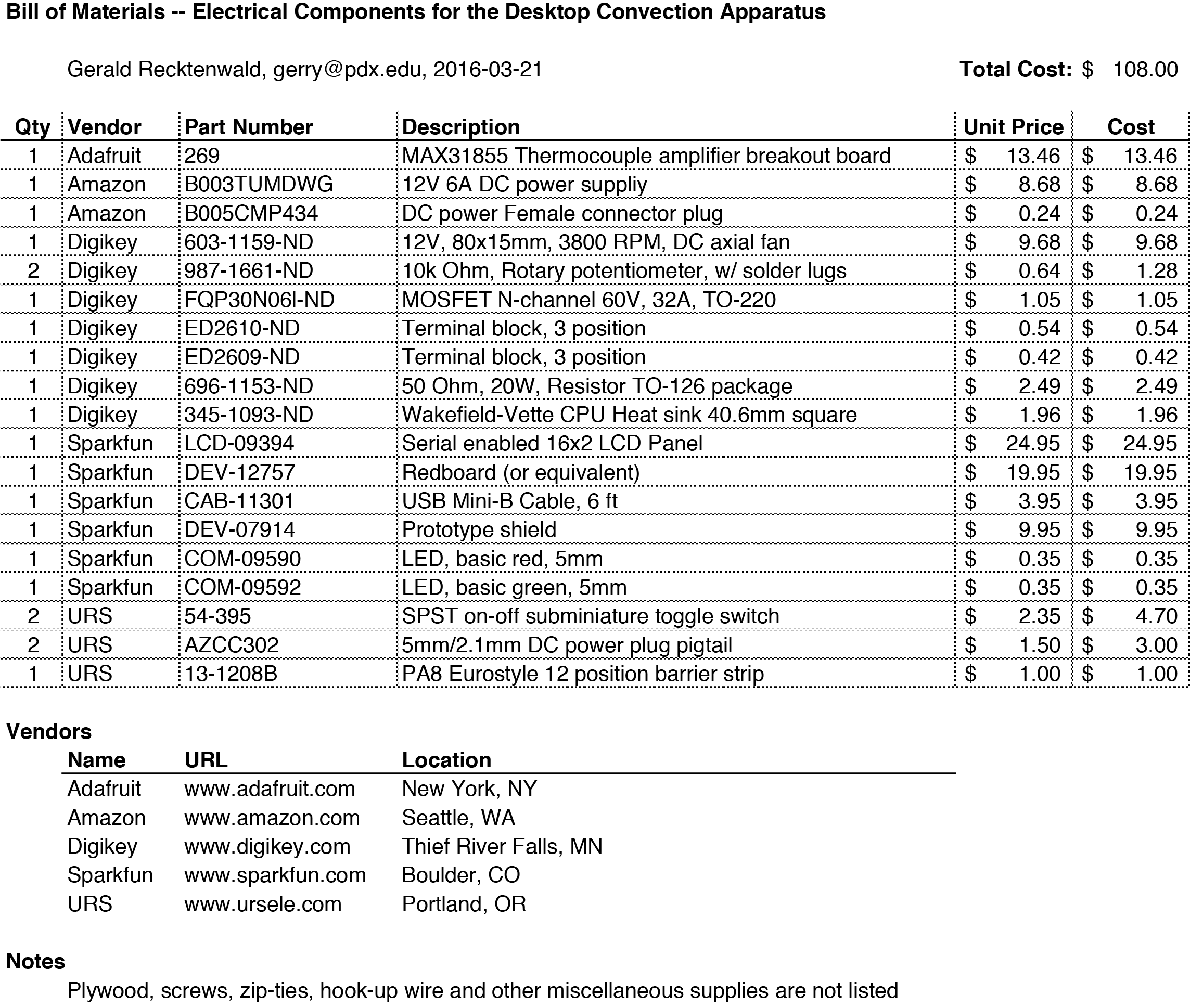A Bill of Materials (BOM) lists the components, sources for the components, and costs of components in a device or a sub-assembly of a device. Items in a BOM will include fasteners, fittings, mechanical components, entire assemblies and electrical parts that are purchased from vendors. A BOM can also include raw materials used to fabricate the device or sub-assembly. The raw material specification would be especially important if particular material properties are required for a part.
The level of detail in a BOM will vary according to context. For a complex manufactured device the BOM can aid in assembly, can be used by manufacturing engineers to establish supply chains, and can be used in financial analyses to optimize production costs. For simple, stand-alone projects, a BOM will simplify engineering design efforts by providing detailed information on the cost and source of all items necessary to make a copy.
The BOM is similar to a parts lists for assembly instructions or repair manuals, with two important exceptions: a BOM includes the cost of each component and information on the vendor from which the component is procured.
For ME 491, 492 and 493, the BOM for a device or sub-assembly is used to document prototypes and to report on final cost estimates for production of the final design. For ME 419, 492, 493, a BOM should
- indicate the quantity, unit cost, and total cost of each component;
- have vendor or commercial source of each item;
- have a part number if available;
- have total cost, i.e. sum of expenses;
It may be helpful to list the person responsible for the item or assembly. If you scavenged parts or obtained donated parts, include those items and a realistic estimates of their costs.
Here is a sample BOM for just the electronic components in an apparatus designed to demonstrate convective heat transfer principles for students in ME 323. You can download the spreadsheet version or the PDF version of this example.
